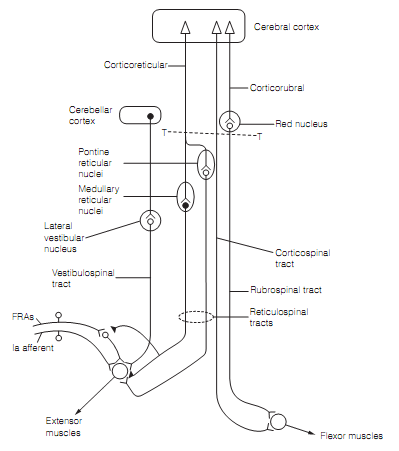Decerebrate rigidity
Patients in whom brain trauma or a tumor generates functional disconnection of the brainstem from the rest of the brain at the level among the red nucleus and the vestibular nuclei illustrate an increase in extensor tone known as decerebrate rigidity. It is cause by tonic action in the vestibulospinal and reticulospinal neurons which is no longer opposed by the powerful facilitation of flexor motor neurons by the rubrospinal tract which is as shown in figure below. The overall consequence of the vestibulospinal activity is the activation of extensors. The reticulospinal inhibition and excitation of extensor motor neurons tend to cancel, though reticulospinal inhibition of interneurons mediating flexor reflexes outcomes in net extensor activity. The high firing rates of both α & γ motor neurons facilitated by vestibulospinal and reticulospinal inputs needs on-going sensory input from muscle spindles.

Figure: Illustration of the principal descending inputs to motor neuron pools. Fusimotor fibers (not shown in figure) are commonly affected in similar manner as motor neurons. The transection of brainstem at the level of T–T causes decerebrate rigidity.